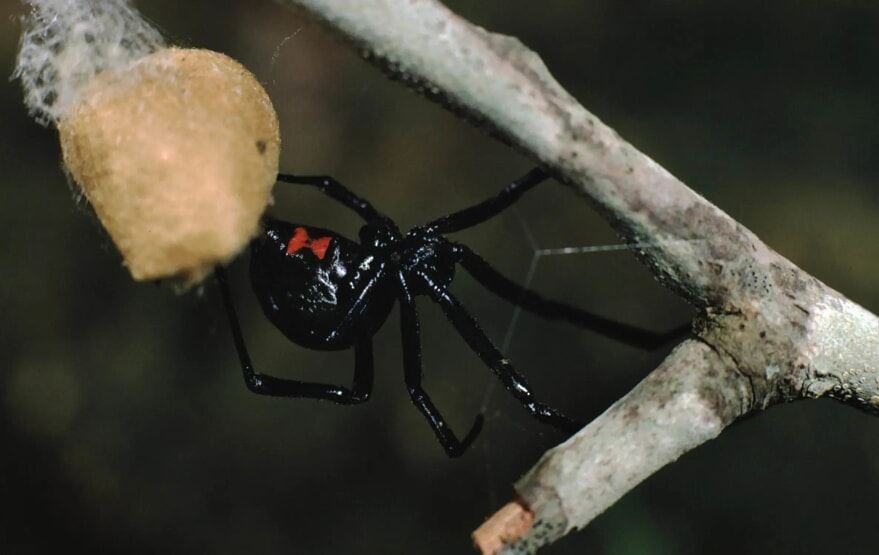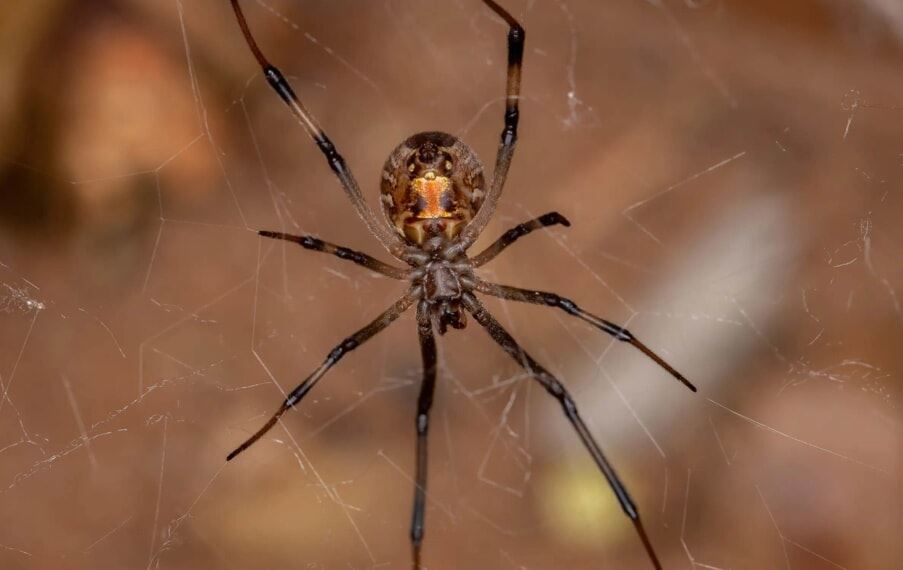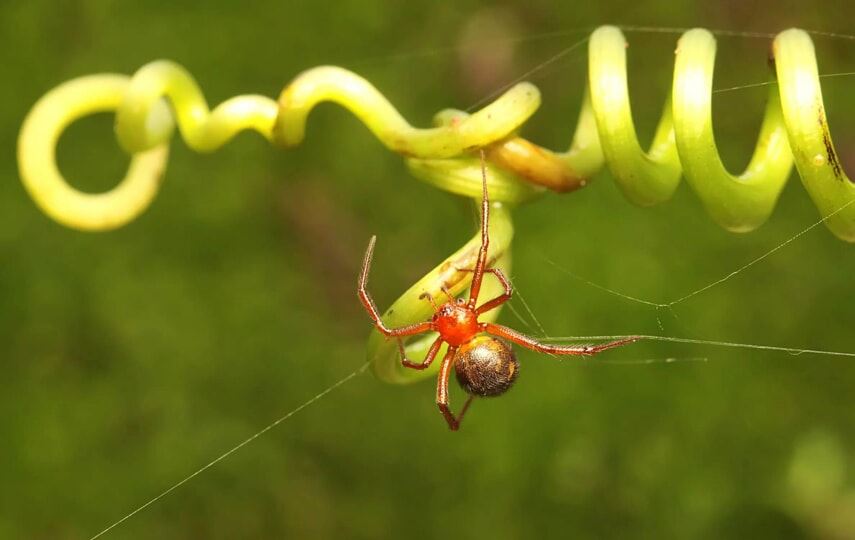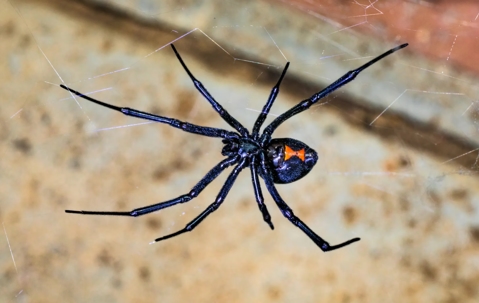Identifying Black Widows in South Florida
Florida's teeming with black widow spiders, easy to spot with their shiny black look and that notorious red hourglass.
Though they pack a nasty bite, these shy spiders chill in secluded spots like woodpiles and old sheds, only striking if they feel threatened.
Curious about these creepy critters? Stick around as we dive deep into the world of black widows.
Key Takeaways
- Identifying black widows in Florida is crucial due to their venomous nature, focusing on their size, color, and distinctive red hourglass markings.
- In Florida, varieties of widow spiders include the Southern Black Widow, Brown Widow Spider, Red Widow Spider, and Northern Black Widow, each with unique markings and colors.
- Black widows' habitats include garages, basements, closets, and dense vegetation, with their presence minimized through regular cleaning and reducing clutter.
- Symptoms of a black widow bite can escalate from immediate pain to severe muscle cramps and difficulty breathing, requiring immediate medical attention.
- Preventing black widow infestations involves regular home cleaning, sealing entry points, proper outdoor storage, and professional pest control for safety and effectiveness.
Identifying Black Widows
Due to their venomous nature, recognizing black widows is crucial when encountering spider species in Florida.
Two key aspects that would aid you in identifying these types of spiders include:
- their visual markings and body shape
- the variations among species found in the region
Visual Markings and Body Shape
Black widows are known for their distinctive body characteristics. Here’s a closer look at the features to look out for:
Feature | Description |
Size | Typically about 1.5 inches in length, including leg span. |
Color | A shiny black body is a typical identifier for these spiders. |
Hourglass | The underside often has a prominent red hourglass marking. |
Note that variations can occur while the iconic red hourglass is a hallmark of black widows.
Species of Widow Spiders in Florida
Correct identification is essential for understanding the region's entomology and staying safe when encountering these venomous arachnids.
Southern Black Widow

The Latrodectus mactans is common throughout Florida, making it a frequent encounter for residents.
- Color: Shiny black.
- Distinctive Markings: Features a red hourglass shape on the underside.
Brown Widow Spider

The presence of Latrodectus geometricus is increasing, particularly in urban areas of South Florida, signaling a growing adaptation to human environments.
- Color: Ranges from dark brown to black, adorned with lighter stripes.
- Distinctive Markings: An orange to yellow hourglass marking is present, along with banded legs.
Red Widow Spider

Latrodectus bishopi thrives in sand-pine scrub ecosystems, primarily Central to South Florida. It indicates a preference for specific habitats.
- Color: Exhibits a red-orange to sandy brown hue.
- Distinctive Markings: Lacks a complete hourglass marking but has red spots on the abdomen.
Northern Black Widow Spider
.2406101218550.jpg)
Latrodectus variolus is less common than its southern counterpart, the northern black widow, mainly found in northern Florida.
- Color: Shiny black.
- Distinctive Markings: Characterized by an hourglass that is often broken or incomplete, accompanied by additional red spots.
Where Do Black Widows Live in Florida?
Understanding their preferred habitats and behaviors is crucial for coexistence and avoiding unwanted encounters.
Regular cleaning and reducing clutter in these areas can minimize the presence of black widows.
- Garages and basements, where clutter provides hiding spots.
- Closets and attics in homes, blending into seldom-disturbed items.
- Woodpiles and debris in yards offer ample cover.
- Dense palmetto growths in natural areas, often shaded and undisturbed.
What Do Black Widow Webs Look Like?
Black widows eat insects that get tangled in their irregular, sticky webs. Their webs are typically found close to ground level and feature a funnel where the spider hides.
Here’s how you can identify their webs:
- Search for messy, tangled webs in dark corners.
- Check for web accessibility, as spiders need to capture prey.
- Look near the ground in both open spaces and hidden areas.
Black Widow Life Cycle
Seasonally, adults are more visible during warm months, while juveniles are often seen in the fall.
Reproduction typically occurs in spring and summer in South Florida climates.
Stage | Description |
Egg | Female black widows deposit sacs containing hundreds of eggs. |
Spiderling | Young spiders emerge and disperse quickly. |
Juvenile | Stage of growth without extensive web construction. |
Adult | Mature spiders with established webs and territories. |
Signs of Black Widow Infestations
You should know several indicators when suspecting a black widow spider infestation. Spotting these signs necessitates caution, as black widows are venomous.
Signs | Description |
Webs | Black widow spiders construct messy, irregular webs often found near ground level. These webs are strong and silken. |
Live Spiders | Naturally, spotting an actual black widow is a strong indicator. They are recognizable by their shiny black color and a distinctive red hourglass shape on the underside of their abdomen. |
Egg Sacs | Female black widows create papery, spherical egg sacs that house hundreds of eggs. These sacs are about 1/2 inch big and may be found on the web. Multiple egg sacs can signal a growing infestation. |
Bites | Though less common, if there are medical reports or physical evidence of bites that appear to be from black widows, this could suggest an infestation. Their bites are often painful and swell. |
Preventing Spider Infestations
To keep black widows at bay, you need to be proactive in reducing the appeal of your space to these spiders. Here’s how you can do so:
- Regular Cleaning: Keep your home, especially basements, garages, and closets, free of clutter. Dust and vacuum regularly to disturb any potential web-building.
- Seal Cracks: Seal any cracks and crevices in windows, doors, and foundational walls to prevent entry points for spiders.
- Proper Storage: To discourage spider nesting, store firewood, building materials, and other debris away from the home's exterior.
- Landscaping: Keeping shrubs and bushes trimmed back from the house also helps prevent black widows from venturing too close.
- Lighting: It might help to switch exterior lights to yellow bulbs or sodium vapor lights, which are less attractive to the insects that spiders feed on.
- Pest Control Services: For persistent problems or to ensure a professional touch, calling in pest control services can provide a thorough assessment and treatment.
Is It Time to Call the Experts?
Encountering a black widow in your Florida home can undoubtedly raise some eyebrows—and maybe even heart rates.
These arachnids have a reputation, and it's not for their web-weaving skills alone. Fear not, though, because professional pest control services (like us, here at Native Pest Management) are just a phone call away.
We have the expertise to handle the situation safely and effectively, helping to keep your home the cozy,spider-free retreat it should be.
